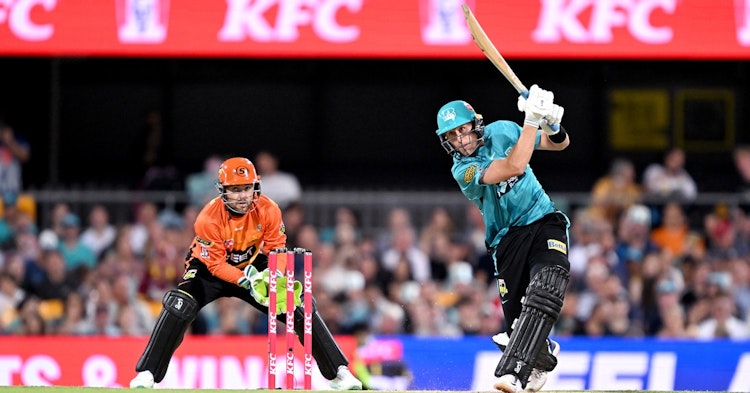BBL|12: How Important Is A Top-2 Finish In The Big Bash League?
Last updated: Jan 12, 2023, 10:27PM | Published: Jan 28, 2021, 5:09AM
The BBL|12 season is past the halfway point and we're already seeing the familiar few towards the top of the ladder.
It’s been a season of emerging stars, fly-in, fly-out international imports and the perennial contenders consistently performing but now with the Australian Test stars returning to the BBL, banking early wins before teams reach their full strength outfits has been incredibly important.
Currently, the Perth Scorchers and the Sydney Sixers have separated themselves from the pack, sitting several points clear at the top of the table, but how vital will it be to hold onto that position entering the finals?
Let's take a look at how previous seasons have gone and what the record says about the BBL|12 as it enters the latter stages.
RELATED: Take a look at Stats Insider's BBL Futures Model
The Old BBL Finals Structure
Prior to BBL|09 the top 4 teams qualified for the finals, with Team 1 taking on Team 4 and Team 2 taking on Team 3. The winner of each of those games advanced to the Grand Final.

This ‘knockout’ style created a high stakes affair for all teams involved, with the only real advantage for finishing in the top two spots being a home semi-final. Just how big of an advantage that is in practice may be up for debate given historical results in the BBL.
RELATED: Breaking Down Home Ground Advantage In The Big Bash League
The Current BBL Finals Structure
Now we move to the current finals structure, shown in the flow chart below.

The first thing that jumps out is the 5th place team is now granted a finals berth. Whilst some traditional schools of thought may not quite be on board with a team finishing in the lower half of the table still being able to win the competition, as we will see, they have no easy road to the title, while it doubtlessly gives some fans a glimmer of hope that would otherwise not have been present.
The teams that finish the regular season in the top-2 spots are now given a second bite of the cherry if they are defeated in their first finals match.
They also only need to win two finals matches in order to take home the title (compared to four for the teams finishing 4th/5th and three for the team finishing 3rd).
Contrast this with the old finals structure where in order to win the competition all four teams needed to win two games, back-to-back (with no second chances).
Whilst one or two games may not seem like a lot, it’s important to keep the context of the BBL in mind. Whilst yes, there are teams who are better and worse then each other, overall the BBL is a pretty even competition. Rarely do we see lopsided favourites in the BBL compared to its winter counterparts (a quick survey of bookmaker odds we rarely see a favourite at greater than a 70% chance of winning the match.
Contrast this with NRL/AFL where teams started the match with a chance of winning greater than 90% on multiple occasions).
This ‘evenness’ combined with the dynamic, fast-paced nature of T20 cricket leans right into the age old cliché that anything can happen on any given day. Having to play (and win) less games leaves less open to chance (or just one bad day at the office). When viewed in this light it seems hard to conclude having to win less games to win the competition is anything but a good thing.
Throw in the second bite of the cherry and suddenly those top two spots start to look a bit more attractive.
But let’s not leave it there.
The Stats Insider Futures model takes into account the finals structure we discussed above in making its predictions. To illustrate this, let's cast our mind back to BBL|10 and take a look at our model's predictions heading into finals.
By subbing in the ‘Old’ Finals system and comparing it to our predictions using the ‘Current’ finals system, we can really start to quantify just how much better (or worse) off teams may be.

*Predictions prior to the BBL|10 finals series commencing.
Just as we suspected, there's a clear shift towards the teams that finished 1 and 2, compared to 3 and 4 under the current finals system.
Now obviously part of the above comparison will be influenced by the different ratings our futures model assigns to each team. So to try and strip that out, let’s assume a hypothetical world where every team is rated exactly the same (so if they play each other it is a 50/50 contest), with the only difference between them being where they finished on the ladder, and repeat the same exercise.

*For the purposes of this exercise assumes no Home Ground Advantage
The results tell a similar tale. Not only that we can clearly see the 4th place team is worse off under the change in system (which makes sense in the context of our discussion above regarding teams having to play extra games).
The above rams home, now more than ever, the importance of a top 2-finish.
Given the BBL has been extended to a full home and away season in recent years, it may be a welcome change insofar as rewarding consistent performance over the course of the entire season. It also offers somewhat of a ‘safeguard’ against international players parachuting back into teams at the back end of the tournament, and thus fundamentally changing their identity.
If nothing, the BBL's new finals structure has provided the competition with some interesting talking points which will hopefully be translated into plenty of exciting, on-field action throughout the remainder of the tournament.
Did you enjoy this article? Join our free mailing list to get the best content delivered straight to your inbox, or join the conversation by leaving a comment below or on the Stats Insider Twitter or Facebook page.




